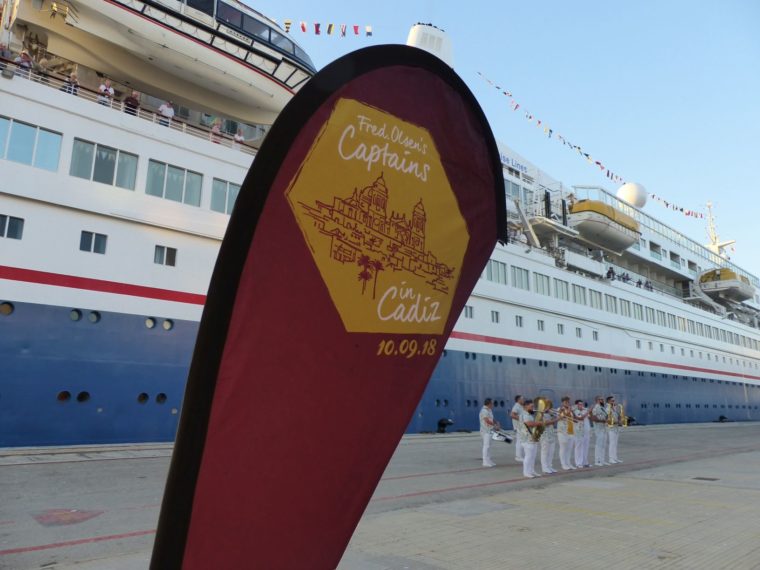 Spain is a country with so many landscapes within its 17 autonomous regions that it would take a lifestyle to explore each in detail. It was therefore a pleasure to spend two weeks dipping in and out of some of its major cities, sailing around its shores and then turning up the Guadalquivir River to Seville and Cadiz, where it was party time for the four ships in the Fred Olsen fleet as they moored together for only the second time in their history – so seeing old friends and making new ones was certainly part of the trip.
Spain is a country with so many landscapes within its 17 autonomous regions that it would take a lifestyle to explore each in detail. It was therefore a pleasure to spend two weeks dipping in and out of some of its major cities, sailing around its shores and then turning up the Guadalquivir River to Seville and Cadiz, where it was party time for the four ships in the Fred Olsen fleet as they moored together for only the second time in their history – so seeing old friends and making new ones was certainly part of the trip.
We sailed from Southampton on MS Braemar on a sunny, still day and so were able to be on deck and enjoying the excitement – flying is one sort of holiday experience but sailing away on holiday always holds a frisson of voyages past and new horizons, and you don’t have to remove your belt and shoes!
Our first port of call was in fact not Spain at all but Portugal. Lisbon, and with a whole day to explore we set off early with guide book in hand. Having a Portuguese friend, I was armed with some insider tips and so went straight to the totally wonderful Santa Justa Lift. The lift dates from the 19th c, and the structure is resplendent with neo-gothic arches and geometric designs, while inside the polished wood carriages transport passengers up in great style to the viewing platform which gives amazing views of the Baixa district. Our head for heights seriously tested we then felt the need for some sustenance and a Pastéis de Nata was swiftly dispatched with a good expresso, and we then went in search of a shot of cherry brandy – it is a tradition, so had to be tried! Served from a tiny booth, our Ginjenga was expertly poured to ensure that we had a small wild cherry in each tiny glass and judging by the numbers of local customers this is a very popular tradition indeed.
Almeria gave us the opportunity to explore a part of Andalucia that was, for many years, a barren and harsh landscape where the only source of income was the sale of a particular type of indigenous grass collected and sold to visiting British ships who transported it back to the UK for use in the production of glass. Fortunes changed when a young film producer who couldn’t afford to make films in the US discovered that the area was an ideal substitution for the background to westerns- and so the spaghetti western was born, bringing much needed jobs and money to the area. Oasys is the mini Hollywood set where films such as ‘The Good, The Bad and The Ugly’ and ‘For a Few Dollars More’ were made and is an entertaining way to see the landscape and indulge in a little ‘Yee Ha’ fun too, never a bad thing to discover your inner cowgirl!
- Castles and crenellations
- Fabulous fans
- Stunning Seville
Malaga offered wonderful tapas in the central market, tiny deep fried octopus, clams with chilli, grilled sardines and some excellent and slightly frizzante white wine enjoyed whilst the hurly burly of the market went on around us. The dazzling displays of lemons and oranges, tomatoes and peaches were testament to the acres of land devoted to fruit and vegetable production said to serve almost the whole of Europe. An afternoon spent in the charming village of Mijas del Pueblo was a break from the city and the white, white buildings and balconies full of flowers made the climbs up and down the steep narrow streets a reward in themselves.
Gibralter was, as might be expected, a welcoming port of call for a British ship and having been before and taken the cable car to the top we opted to walk to the Trafalgar Cemetery – a cool and shady respite on a hot day and then to The Rock Hotel from whose sunny terrace you can see for miles,
Seville was truly a revelation, the pavilions built originally for the Iberio American exhibition in 1928 stand as a testimony to the architects that designed each one to reflect the style of that country and the grandest of them all is the very grand flourish that is the Plaza de España.
This is a truly amazing centrepiece to the city and I can think of no other where you can climb into a rowing boat and float amidst porcelain pedestals and tiled fountains. When a gentle breeze is blowing you can catch a cooling spray from the central fountain and just stand and take in the whole panorama which must truly be one of the finest centrepieces to any city.
Flamenco is at the heart of Seville and we were therefore delighted to spend an evening at the iconic El Patio Sevillano situated right next to the bullring, where flamenco has been performed since 1952 and where great flamenco figures such as El Farruco and Manuel Vargas started their artistic careers. This was the sort of flamenco that comes from deep within, stamping and whirling and showing joy and pain, love and despair and we were treated to some outstanding dancing from the performers – whose concentration and passion was etched across their faces.
As we were overnight in Seville and moored within a few minutes’ walk from the centre, the following day we took a horse and carriage, along with about 20 other couples from the ship, and our large carriage flotilla made a great flourish as it clipped and jangled its way through the streets, the warm stone walls throwing the sound back at us. It gave us a taste of what the city must have sounded like when horses were the only mode of transport and we cut rather a dash in our shiny and stylish carriages. The heat of the afternoon was mitigated by a stop at the Hotel Alfonso X111 which is to Seville what the George V is to Paris, a Grande dame indeed just a stone’s throw from the Cathedral, and a glass of chilled white wine set us up for some more exploring. An excursion to the bodega of Tio Pepe in Jerez was a fascinating insight into production of the drink that graces many a British drinks cabinet and we were charmed to see the very small glass of sherry set out daily for the mouse population of the cellars – with a little ladder to enable them to reach the glass and take a sip – I did listen hard to hear signs of singing mice, but perhaps they were sleeping it off.
Our last port of call was Cadiz and we set off to explore in the cool of the morning. There is something magical about being in a city when it is just waking up, the rattle of shutters rising, the sound of brooms on balconies and the camaraderie of being out and about before the rest of the population is reason enough to forgo breakfast – and early morning bars are always available to provide an eye-opening espresso. Cadiz is one of Europe’s oldest cities and its maritime heritage is reflected, literally, in the gold tiles on the cathedral allowing sailors to see it from their ships. We walked around the walls with the turquoise sea glittering below and with the heat of the day beginning to press on us we headed back to the Plaza Del Ayuntamiento where celebrations were held to commemorate the meeting of all four ships in the Fred Olsen fleet. This was a special occasion and bands and dancers, inter ship competitions and trips to see old friends filled the rest of the day. Our exit from the harbour, all four ships in line with a fire ship accompanying us spouting jets of spray was a fitting end to a truly memorable cruise. River cruising is very different from ocean cruising, sailing through rather than round the countries you visit, and mooring in the heart of cities means that you are immediately in tune with the local atmosphere, sound and sights. If you have never cruised and find an ocean cruise daunting, a river cruise might be just the option – and a small, friendly ship is the ideal way to enjoy it.
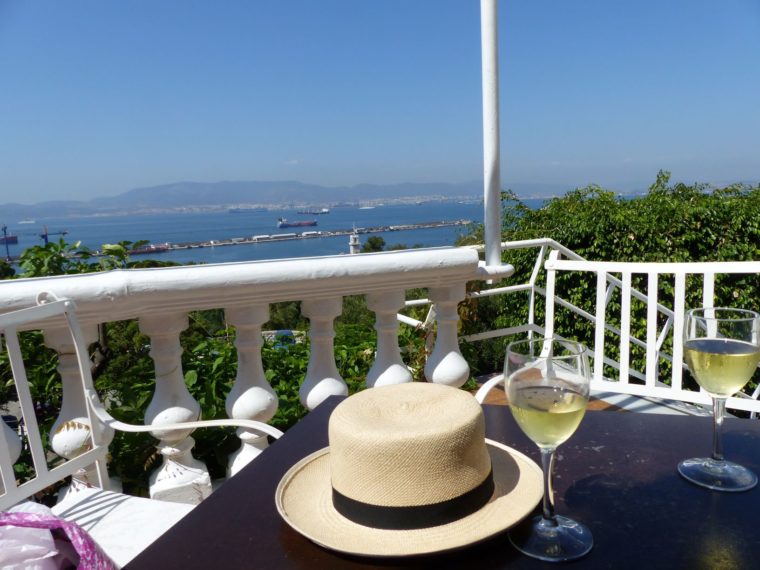 “I would sooner be a foreigner in Spain than in most countries. How easy it is to make friends in Spain!” – George Orwell
“I would sooner be a foreigner in Spain than in most countries. How easy it is to make friends in Spain!” – George Orwell
Angela Cave
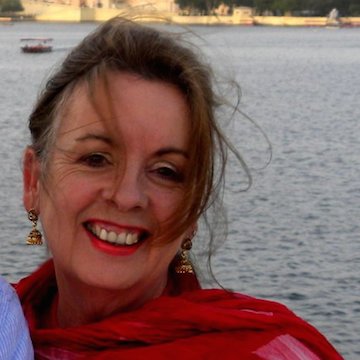
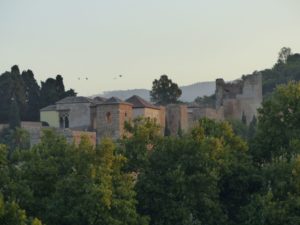

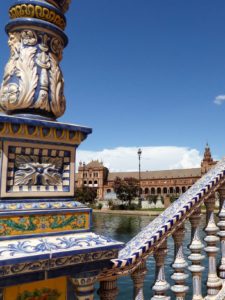
Leave a Reply